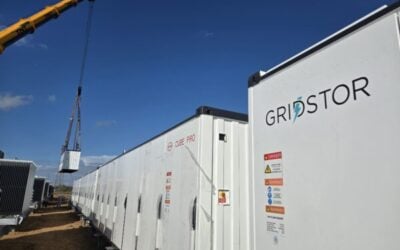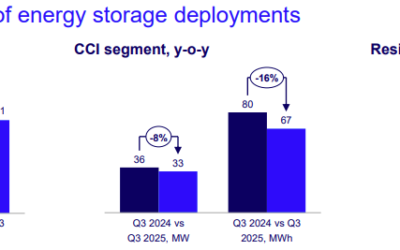Energy storage technology is now used in 44% of US microgrids with 92% of that storage commissioned since 2012, according to GTM Research’s latest report.
The study, ‘North American Microgrids 2015: Advancing Beyond Local Energy Optimization’ also found that renewables including solar are expected to account for 26% of total microgrid capacity in the US by 2020, up from just 6% today.
Furthermore, cumulative investment in microgrids in the country will go beyond US$3.5 billion by 2040, with a total microgrid capacity of 2.8GW.
Omar Saadeh, senior grid analyst at GTM Research, told PV Tech: “The value proposition for energy storage in microgrids is increasing substantially in recent years.”
Try Premium for just $1
- Full premium access for the first month at only $1
- Converts to an annual rate after 30 days unless cancelled
- Cancel anytime during the trial period
Premium Benefits
- Expert industry analysis and interviews
- Digital access to PV Tech Power journal
- Exclusive event discounts
Or get the full Premium subscription right away
Or continue reading this article for free
He said most energy storage microgrid applications in the country involve lithium-ion technology, with lead acid technology accounting for the next highest proportion.
Saadeh said that a growth in microgrids using solar over the coming years can be attributed to substantial cost decreases in PV and better integration methodologies.
He added: “The price point for those technologies is decreasing such that a microgrid can be seen as a more economically viable platform to integrate Distributed Energy Resources (DERs).”
There are also state initiatives promoting such technology in Massachusetts, New York and California with Connecticut introducing initiatives a few years ago.
A GTM statement said: “As solar PV adoption rates increase, flexible micro-grid solutions are becoming a significant component of renewable integration strategies in regions extending beyond high penetration states such as Hawaii and California.”
Saadeh said that various value propositions for micro-grids are seeing “substantial traction” at the moment. For example micro-grids can be used with critical infrastructure to keep the power on at a hospital or with large commercial customers that need to keep their operations running to meet their end goals.
Cumulative investment in microgrids in the country will go beyond US$3.5 billion by 2040, with a total microgrid capacity of 2.8GW. Image: GTM





